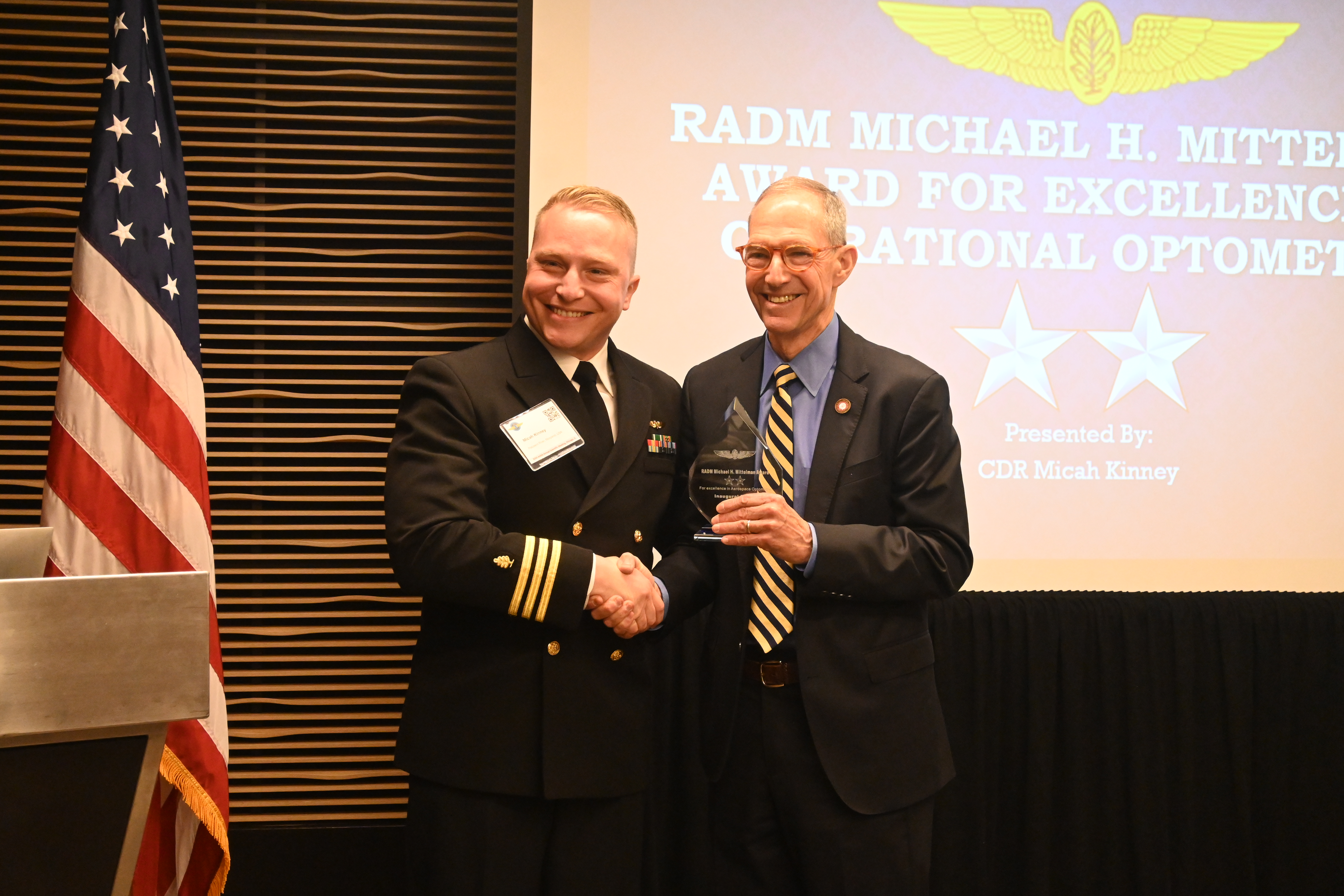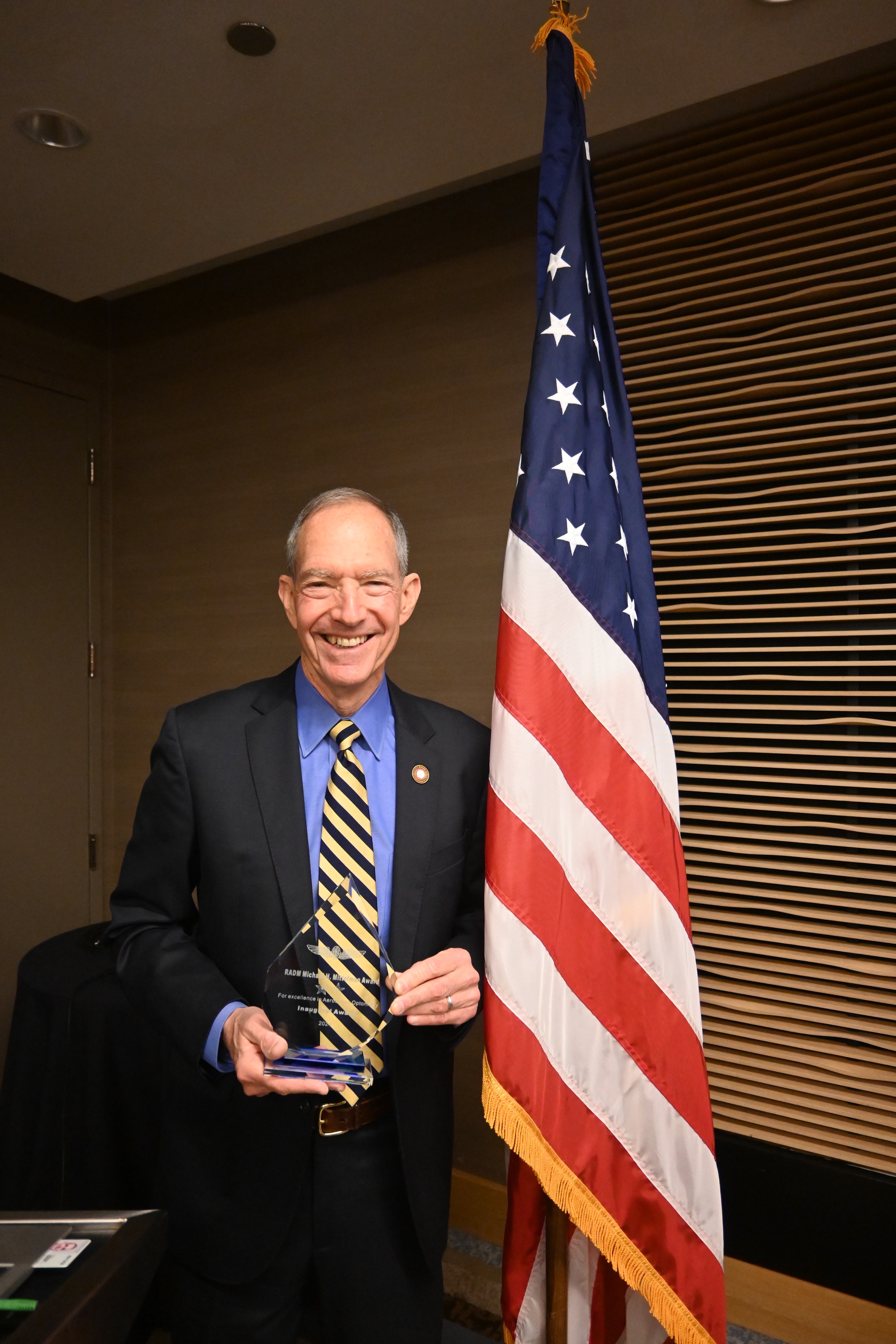
During his career, Salus University president Michael H. Mittelman, OD ‘80, MPH, MBA, FAAO, FACHE, has said he has been lucky enough to be surrounded by some of the giants in aerospace medicine and Navy optometry.
And, now it’s time to add his name to that list of giants.
Dr. Mittelman was in Chicago recently as the inaugural recipient of the Rear Admiral (RADM) Michael H. Mittelman Award for Excellence in Navy Aerospace Optometry at this year’s Aerospace Medical Association (AsMA) conference Navy luncheon.
“I’m unbelievably touched that now my name is being mentioned along with these people,” said Dr. Mittelman during a presentation.
 He’s always believed there’s a close association between aerospace medicine, the very unique environment of Naval Aviation and vision.
He’s always believed there’s a close association between aerospace medicine, the very unique environment of Naval Aviation and vision.
“If we don’t have good vision for a pilot to use to her or his advantage, our aircrew will be at a significant disadvantage. We know visual illusions as well as other issues related to vision can cause deadly accidents,” Dr. Mittelman said. “That’s one of the things that initially got me interested in saying optometry needs to be involved with the aviation community. Vision-specific training we know saves lives.”
His interest in aviation vision was first piqued during his Naval career at his first duty station, Marine Corps Air Station Cherry Point, in Havelock, North Carolina. It was there he was exposed to Aerospace Physiology by friend and mentor, Capt. Jerry Patee.
The two started to talk about the idea of an Aerospace Optometrist and asked themselves, “Wouldn’t it be neat if optometrists were able to get ‘winged’ — as in pilot’s wings. (Dr. Mittelman was “winged” in 1989.)
Another thing that happened to Dr. Mittelman at Cherry Point — something he calls a “life-changing experience” — was that medical experts in aerospace physiology took him under their wings, which laid the groundwork for the aerospace optometry idea to come to fruition.
It was Capt. Bill Buckendorf, Medical Corps, USN, who suggested to Dr. Mittelman if he was interested in starting an aerospace optometry program, he would have to go the the “Cradle of Naval Aviation” — Pensacola, Florida. A couple of phone calls later and Dr. Mittelman received orders to report to the Naval Aerospace Medical Institute in Pensacola.
The first thing he did there was to qualify as special air crew. He then started flying with squadron pilots, learning about some of the issues they were having like with those who wore glasses, having them fog up in the cockpit. Dr. Mittelman would talk to the pilots about night myopia, visual illusions and night flying and gather information.
Dr. Mittelman’s career path included being assigned to the Naval Aerospace Medical Institute (NAMI) as chief of optometry; completing a six-month flight surgeon/aerospace physiology program; helping develop and implement the Unaided Night Vision Training Kit, to aid pilots with night flying; and developing an unaided night vision training program for U.S. Army Rangers.
While at NAMI, Dr. Mittelman also worked at the Naval Aerospace Medical Research Lab with Commander Dave Still, an optometrist PhD, and civilian Dr. Leonard Temme, both of whom helped Dr. Mittelman learn about how to develop training tools for unaided and aided night vision.
“It’s all about training and all about generating policy that makes sense,” said Dr. Mittelman.
Throughout his entire career, Dr. Mittelman has been an advocate for aerospace optometry in the aerospace medical community and was thrilled to have an award named in his honor at the AsMA conference.
“I was absolutely honored and humbled by the entire experience,” he said. “One of many high points was reconnecting with old shipmates and friends at the award ceremony.”